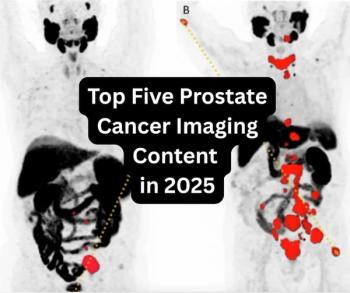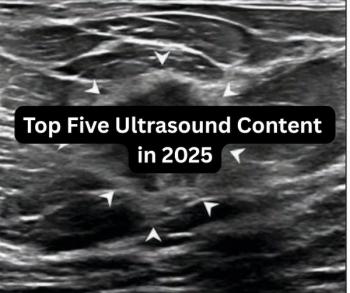
The State of Radiology Reimbursement in 2019
What you need to know about coding and reimbursement this year.
For the third year running, radiology is seeing a lull in coding and reimbursement changes.
But, while there are relatively few alternations to how you should code for-and will get paid for-your services, that doesn’t mean there aren’t things you should pay attention to this year to maintain a healthy bottom line. And, according to industry leaders, you can also take active steps in this direction.
Embrace MIPS changes
In a downgrade from last year, the Center for Medicare & Medicaid Services (CMS) has reduced the quality points awarded for some Merit-Based Incentive Payment System (MIPS) measures from 10 to 7. These decreases could impact whether you meet the 60-point requirement.
Related article:
“You definitely want to look at which MIPS measures you’re reporting, whether their value has changed, and how it impacts your practice,” says Sandy Coffta, vice president for client services at Healthcare Administrative Partners. “Even if you qualified for an incentive this year, you might not next year or you could be at risk for a penalty.”
The point drops affect the easier-to-complete measures, she says, indicating CMS wants you to invest deeper into technology and work closer with your hospitals to earn the same number of points.
These measures are now worth seven points:
- 76: Prevention of central venous catheter-related bloodstream infections
- 130: Documentation of current medications in medical record
- 146: Inappropriate use of “probably benign” in screening mammography
- 147: Nuclear medicine correlation of existing imaging studies for all patients undergoing bone scintigraphy
- 195: Stenosis measurement of carotid imaging reports
- 225: Reminder system for screening mammograms
Additionally, appropriately report these measures, Coffta says, to bolster your earned points:
- 145: Exposure dose indices or exposure time and number of images reported for procedures using fluoroscopy
- 405: Appropriate follow-up imaging for incidental abdominal lesions
- 406: Appropriate follow-up imaging for incidental thyroid nodules
- 436: Radiation consideration for adult CT-Utilization of dose-lowering techniques
Implement new codes
Although there aren’t any major changes to reimbursement levels this year, CMS expanded the number of available codes, says Ezequiel Silva, MD, FACR, chair of the American College of Radiology Commission on Economics.
“There are a number of new CPT codes out there allowing us to report and, presumably, gain payment more easily for new and innovative services,” he says. “This is the most new CPT codes radiology has enjoyed in many, many years.”
The is also one new MR elastography code, 76X01 (for the evaluation of organ parenchymal pathology), and three new ultrasound elastography codes: 767X1 (parenchyma), 767X2 (first target lesion), and 767X3 (each additional target lesion). They’ll be available for use later during Quarter 1 or Quarter 2, Silva says. Once they’re active, submit them to increase your reimbursement.
Examine your quality payment program performance
This year, you’ll finally see the results of your involvement in the
Even though you can’t change your 2019 payment adjustments, you can grow your future reimbursement. Effectively, Silva says, you can learn from past mistakes and successes.
“A prudent exercise is looking at how you did in the 2017 performance report,” he says. “Go back and review. Where did you get an upward bonus? Where did you incur a negative penalty this year? That lets you see where you can improve on your performance for 2019 and what you need to maintain.”
Continue preparing for clinical decision support
Full Protecting Access to Medicare Act (
“You have the time to evaluate who your problem referring doctors are and reach out to them to let them know they’ll need to do this next year,” she says. “If you’re in a hospital, you’ll have more leverage for their compliance because, eventually, those doctors will get penalized by having to get pre-authorization for all their high-end Medicare procedures.”
Related article:
To get ahead of the game, ACR’s Silva recommends working to get your referring clinicians on board now. Using tools, such as ACR’s
“This initiative provides educational materials for both radiologists and ordering professionals on how to implement PAMA,” he says. “It allows for bi-directional communication between the affected parties and is a nice on-ramp to enable communication, education, practice experience, and, perhaps, some claims-based experience.”
Evaluate your commercial payers
According to Melody W. Mulaik, MSHS, CRA, CPC, CPC-H, FAHRA, RCC, president of
“Commercial payer contracts are changing, and practices and hospitals are seeing the consequences. Depending on your market, if you’re not in the best negotiating position, you could be stuck with their rates, and that can ratchet down your revenue,” she says. “Be sure you understand markets and your payer mix, and try to have the best relationships with your commercial payers. If you’re not paying attention to all of that, you’ll be at great risk of losing valuable reimbursement.”
In particular, she says, review your contracts, identifying if there’s a difference between what you are and what you should be getting paid. And, in the future, invest more time in every contract negotiation than you did previously.
Other strategies
There are two time-tested tactics you should always use to avoid foregoing earned payment, Coffta says.
First, pay attention to bundled codes you regularly use. If you don’t submit them correctly, you’ll likely receive a denial, resulting in forfeited or delayed reimbursement. Have a good quality assurance program in place to ensure you capture all billable services, such as consulting with a patient before any interventional procedure.
Related article:
Second, work with your patients to establish agreed-upon, recurring credit card charges to ensure you receive full payment for services rendered.
“People pay their medical bills last,” she says. “If patients are responsible for payment, this is one of the biggest factors in not getting paid.”
Overall, plan to be more proactive about capturing reimbursement in 2019. “It’s a year,” Silva says, “where radiologists need to be more forward-thinking.”
Newsletter
Stay at the forefront of radiology with the Diagnostic Imaging newsletter, delivering the latest news, clinical insights, and imaging advancements for today’s radiologists.




























